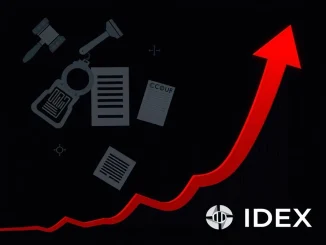
The intersection of politics and cryptocurrency is becoming increasingly prominent, and recent comments from a high-profile US official have certainly captured the industry’s attention. At the bustling Bitcoin 2025 conference in Las Vegas, US Vice President JD Vance delivered remarks that signal a potential shift in the country’s approach to digital assets, particularly **Bitcoin**. His appearance and statements have sparked considerable discussion within the crypto community.
JD Vance Takes the Stage at Bitcoin 2025
Speaking before an audience eager for insights on the future of the industry, JD Vance shared his perspective on cryptocurrency. He characterized crypto not as a top-down financial instrument, but as a “ground-up innovation.” This framing suggests a view of the technology as a product of organic development and individual empowerment rather than institutional design.
One of the most striking predictions Vance made was his forecast that 100 million people will own **Bitcoin** in the near future. This bold prediction underscores a belief in the accelerating adoption rate of the world’s leading cryptocurrency and its potential to become a mainstream asset class for a significant portion of the population.
Why Bitcoin as a Hedge?
Vance echoed a common sentiment among crypto advocates: the idea that digital assets, especially **Bitcoin**, serve as a hedge. He specifically mentioned hedging against:
- Inflation: The belief that Bitcoin’s capped supply makes it a store of value resistant to the devaluation effects of fiat currency printing.
- Government Overreach: The perspective that decentralized cryptocurrencies offer an alternative financial system less susceptible to control or confiscation by governments.
This view aligns with the core principles that drive many early adopters and proponents of decentralized finance.
Critiquing the Current Crypto Regulation Landscape
The current state of **Crypto Regulation** in the United States has been a point of contention between the industry and government bodies. JD Vance did not shy away from this issue, offering criticism of existing regulatory approaches and specific figures.
He singled out regulators like Gary Gensler, the current Chair of the Securities and Exchange Commission (SEC). The SEC under Gensler has pursued an enforcement-first strategy, which critics argue lacks clear rules and stifles innovation. Vance’s criticism reflects the industry’s frustration with what is often perceived as an ambiguous and sometimes adversarial regulatory environment.
Pledging a Pro-Crypto Policy Under a Trump Administration
Looking ahead, JD Vance outlined a potential shift in official US **Crypto Policy** should the Trump administration return to power. He pledged that such an administration would actively support the cryptocurrency industry. This support would presumably involve creating a more favorable legal and regulatory framework for crypto businesses and investors.
A key part of this pledge involves ending policies perceived as harmful to the industry. Vance specifically mentioned putting a stop to what critics call “Operation Chokepoint 2.0.”
Understanding Operation Chokepoint 2.0
While not an officially named government program, “Operation Chokepoint 2.0” is a term used by the crypto industry to describe what they see as coordinated efforts by regulators and financial institutions to cut off crypto companies from banking services. This mirrors the original “Operation Chokepoint” from the Obama era, which targeted industries like payday lenders and gun dealers by pressuring banks to cease doing business with them.
Ending perceived policies akin to **Operation Chokepoint 2.0** would likely mean ensuring crypto businesses have access to traditional banking services without facing undue pressure or discrimination. This is a critical issue for the operational viability of many companies in the space.
What Does This Mean for Bitcoin and the Industry?
Comments from a figure like **JD Vance**, particularly at a major industry event, carry weight. They signal that cryptocurrency, and **Bitcoin** specifically, is becoming a significant topic in mainstream US political discourse. A potential shift towards a more supportive **Crypto Policy** could have profound effects, encouraging investment, fostering innovation, and potentially clarifying the regulatory landscape that has been a source of uncertainty.
While predictions like 100 million **Bitcoin** holders are forecasts, the policy discussions highlight the growing recognition of crypto’s role in the economy and finance. The industry will be watching closely to see if these pledges translate into concrete policy changes.
Conclusion: A Glimpse into Bitcoin’s Political Future
JD Vance’s appearance at Bitcoin 2025 offered a clear message: a potential future administration views crypto as an important innovation and seeks to implement a more industry-friendly **Crypto Policy**. His prediction about widespread **Bitcoin** ownership, combined with criticism of current **Crypto Regulation** under figures like **Gary Gensler** and the promise to end perceived obstacles like **Operation Chokepoint 2.0**, paints a picture of a possible future where the US aims to be a more welcoming environment for digital assets. These statements provide hope for many in the industry looking for regulatory clarity and government support.



